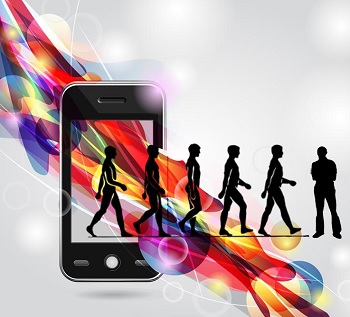As runways were stomped by models in cutting edge menswear fashions, wearables were also in the spotlight.
As the first ever Men’s Fashion Week was hosted in Toronto, all eyes were focused not only on the very latest and hottest in menswear, but were also on high tech wearable technology in a range of different forms.
Everything from LED helmets to brain-sensing headbands – and everything in between – was present.
Even a wearable technology tie made its way down the runway in the Canadian city’s fashion shows for men that took place at the Fairmont Royal York hotel. The wearables were spotted in a number of shapes and designs and were used for several different purposes. The primary show for this tech was presented by We Are Wearables, which is an organization that is based within the city. Its goal was to make this type of device more accessible to both consumers and businesses alike.
The purpose of the inclusion of wearable technology in the fashion show was to promote innovation and adoption.
 This emerging mobile technology is already starting to change the way that people think about fashion and tech. Now, We Are Wearables is hoping to facilitate the incorporation of one into the other. The participation in Toronto Men’s Fashion Week was only the latest in a number of broad scale efforts being made by the company to bring these mobile devices into everyday life. It has also already been holding the largest recurring werables meetup in Canada. That now occurs on a monthly basis and boasts a community made up of over 1,300 members.
This emerging mobile technology is already starting to change the way that people think about fashion and tech. Now, We Are Wearables is hoping to facilitate the incorporation of one into the other. The participation in Toronto Men’s Fashion Week was only the latest in a number of broad scale efforts being made by the company to bring these mobile devices into everyday life. It has also already been holding the largest recurring werables meetup in Canada. That now occurs on a monthly basis and boasts a community made up of over 1,300 members.
On the runway, the organization was hoping to be able to showcase the breadth of the spectrum of wearable devices, ranging from gadgets to allow the wearer to better understand him or herself, to providing improved visibility as a combination feature between style and safety.
Among the featured wearable technology devices that were seen include the Muse brain sensing headband from IntraXon to MeU LED panel infused clothing. The organization wanted to show that this type of tech is equally a matter of design and function and that fashion remains a vital element to the success of these gadgets.
Wearable devices will be used in new study from the Michael J. Fox Foundation and Intel
Wearable technology may hold some promise when it comes to researching Parkinson’s Disease. The Michael J. Fox Foundation and Intel have teamed together to study how wearable devices could be used to detect data on the various symptoms of the disease. The information will be uploaded into a cloud computer network and this information will be available to researchers for free. Some 60,000 people in the U.S. alone are diagnosed with Parkinson’s Disease every year and understanding this affliction is beginning to become more important.
Mobile technology is beginning to see more practical uses
Mobile technology plays a significant role in society today, but typically only fills entertainment and social needs. Smartphones allow people to stay in constant contact with one another through the Internet and through a mobile network. Beyond that, mobile technology has only very recently begun to see more attention as a way to gather information about certain medical problems and similar issues.
Study aims to help patients keep track of their symptoms more effectively
 Through the study, data concerning the slowness of movement, tremors, and sleep quality of those suffering from Parkinson’s Disease will be collected. Wearable devices may also help patients self-report their symptoms and how these symptoms affect their lives more efficiently. A small-scale study was held earlier this year in which patients used wearable devices to offer up information about their symptoms. Those participating in the study noted that wearable devices kept track of their symptoms more effectively.
Through the study, data concerning the slowness of movement, tremors, and sleep quality of those suffering from Parkinson’s Disease will be collected. Wearable devices may also help patients self-report their symptoms and how these symptoms affect their lives more efficiently. A small-scale study was held earlier this year in which patients used wearable devices to offer up information about their symptoms. Those participating in the study noted that wearable devices kept track of their symptoms more effectively.
Wearable technology has seen little practical use in the past few years, but that may be changing quickly
Wearable technology is gaining popularity, but wearable devices are typically seen as novelty rather than practical tools. Most wearable devices have to do with entertainment in some way, while others exist for social media purposes. There are very few of these devices currently available that represent some practical use. Some smartwatches, for instance, exist that help keep track of health information, but wearable devices have seen little practical use beyond this.
 This emerging mobile technology is already starting to change the way that people think about fashion and tech. Now, We Are Wearables is hoping to facilitate the incorporation of one into the other. The participation in Toronto Men’s Fashion Week was only the latest in a number of broad scale efforts being made by the company to bring these mobile devices into everyday life. It has also already been holding the largest recurring werables meetup in Canada. That now occurs on a monthly basis and boasts a community made up of over 1,300 members.
This emerging mobile technology is already starting to change the way that people think about fashion and tech. Now, We Are Wearables is hoping to facilitate the incorporation of one into the other. The participation in Toronto Men’s Fashion Week was only the latest in a number of broad scale efforts being made by the company to bring these mobile devices into everyday life. It has also already been holding the largest recurring werables meetup in Canada. That now occurs on a monthly basis and boasts a community made up of over 1,300 members.
 Through the study, data concerning the slowness of movement, tremors, and sleep quality of those suffering from Parkinson’s Disease will be collected. Wearable devices may also help patients self-report their symptoms and how these symptoms affect their lives more efficiently. A small-scale study was held earlier this year in which patients used
Through the study, data concerning the slowness of movement, tremors, and sleep quality of those suffering from Parkinson’s Disease will be collected. Wearable devices may also help patients self-report their symptoms and how these symptoms affect their lives more efficiently. A small-scale study was held earlier this year in which patients used 